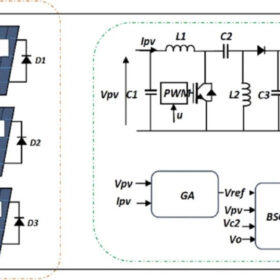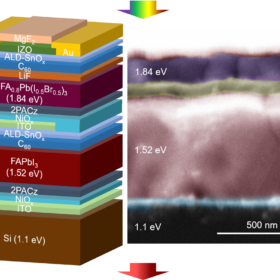Battery prices collapsing, grid-tied energy storage expanding
From July 2023 through summer 2024, battery cell pricing is expected to plummet by more than 60% due to a surge in electric vehicle (EV) adoption and grid expansion in China and the United States.
Mahindra Group and Johnson Controls launch net zero buildings initiative in India
Under the Net Zero Buildings Initiative, Mahindra Group and Johnson Controls have launched a cost-free toolkit that will help building and facility owners to learn about the best practices of sustainable buildings, implement tools to assess building parameters, identify and implement conservation measures, and understand building regulations in India, available incentives, technology, financing models, and more.
Delta Electronics explores India’s renewable energy landscape from lithium batteries to green hydrogen
Delta Electronics, which has been present in India for the last 20 years, recently launched its containerized data center solution in the country. With all subsystems such as UPS, power distribution, battery, cooling, and racks well integrated, this plug-and-play solution ensures rapid deployment for edge computing applications in the IoT world. On the occasion, pv magazine spoke to Rajesh Kaushal, vice president of Delta Electronics India, about their containerized data center solution, lithium-ion battery and solar inverter business, and future plans for India.
New approach to improve MPPT in partially shaded PV systems operating at high temperatures
The novel methodology is reportedly able to track global maximum power point and reduce power losses in partially shaded PV systems by up to 33%. It uses a backstepping controller (BSC) algorithm to adjust the pulse width modulation signal and a genetic algorithm to compute the BSC gains to achieve an optimal PV system outcome.
New tech to remanufacture recycled perovskite solar cells
An international research team has developed a novel way to remanufacture fully encapsulated perovskite solar cells after recycling. The researchers say the devices can achieve 88% of the original efficiency of the products.
The Hydrogen Stream: Acme to supply 100,000 tons per annum of green ammonia to Yara
Acme has secured a long-term offtake contract with Norway’s Yara for 100,000 tons per annum of ammonia from renewables.
L&T commissions indigenously built hydrogen electrolyzer at Hazira
Larsen & Toubro (L&T) has commissioned its first indigenously manufactured electrolyzer at the green hydrogen plant of its state-of-the-art manufacturing facility AM Naik Heavy Engineering Complex in Hazira, Gujarat. The pressurized alkaline electrolyzer can produce 200 Nm3/hour of hydrogen.
Perovskite: The next breakthrough in solar panel technology for India
Perovskite technology, with its potential for large-scale deployment and local production, presents a compelling pathway towards a more secure and sustainable energy future.
The Hydrogen Stream: Prime Minister Narendra Modi inaugurates India’s first indigenous green hydrogen fuel cell ferry
Prime Minister Narendra Modi launched a green hydrogen fuel cell inland waterway vessel designed, developed and manufactured by Cochin Shipyard. He also inaugurated various other projects aimed at making Tamil Nadu’s V.O. Chidambaranar Port the first Green Hydrogen Hub Port of the country.
Triple-junction perovskite–perovskite–silicon solar cell achieves record-breaking efficiency of 24.4%
Developed by scientists in Germany, the triple-junction cell is based on a perovskite top cell with an energy bandgap of 1.84 eV, a perovskite middle cell with bandgap of 1.52 eV, and a silicon bottom cell with a bandgap of 1.1 eV. The device achieved an open-circuit voltage of 2.84 V, a short-circuit current of 11.6 mA cm–2, and a fill factor of 74%.















